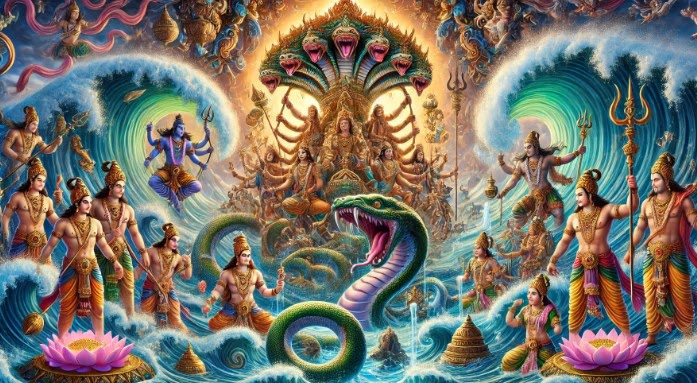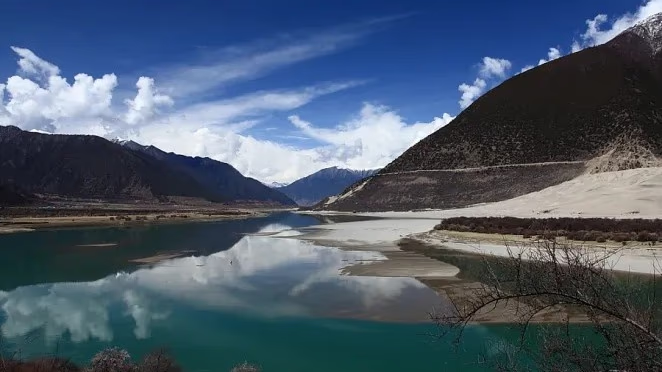The serene banks of Prayagraj in Uttar Pradesh stand ready to welcome worshippers. This sacred confluence of the Ganga, Yamuna, and the invisible Saraswati bears witness to a tradition rich in heritage, echoing ideals like 'Universal well-being' and 'The world is one family.' The practice of bathing at the Sangam isn't limited to religious rituals; it’s a cultural gathering. It's where society comes together, shedding all barriers while the collective chant of 'Har Har Gange' resonates in the air. This convergence embodies the essence of civilizations and remains the lifeline of humanity.
The Quest for the Elixir Leads to Mahakumbh
The Mahakumbh arises from the search for the elixir of life. Centuries ago, the churning of the ocean was orchestrated using the Mandar Mountain as a churn, with the serpent Vasuki serving as the rope. When the Mandar Mountain began to sink into the ocean, Lord Vishnu assumed the Kurma (Tortoise) avatar, stabilizing it on his back, thus enabling the churning to proceed.
Vasuki the Serpent Rope and the Mandar Churn
On one end, gods pulled Vasuki, while demons pulled from the other. The Mandar Mountain spun like a wheel in the ocean. Days passed in rigorous toil without anything surfacing from the ocean bed. Then one day, a strong odor emerged, causing darkness to engulf the world. All were affected by the poison's potent fumes.
The Emergence of Poison
Who would contain this venom? How to mitigate its effects and who would save the world? Those in pursuit of the elixir fled on seeing this poison. Though demons insisted the first find would be theirs, they dared not claim this ominous substance.

Source: aajtak
The Allies in Snakes
No god volunteered to consume it till Lord Shiva, the celestial healer, stepped forward. Unfazed by poison or elixir, he halted the venom in his throat, turning it blue, earning him the name Neelkantha. Snakes and similar creatures consumed the drops that spilled, aligning with Lord Shiva's mission, and hence turned venomous.
Lord Shiva's Water Abhishek
To pacify the venom's heat, repeated water consecrations over Shiva followed. Cooling substances were applied, including the use of sacred herbs and dairy, preventing world destruction.

Source: aajtak
The 14 Treasures of Ocean Churning
Fourteen divine treasures emerged from the churning, as detailed in the ancient verses.
Great poison, clouds, moon, sun, steeds of speed, emerging glory, divine lotus, abundant beckoning of fortune, and the esteemed elixir. Amongst these were Parijat flowers and heavenly nymph Rambha, each adding to the celestial tale.
Additionally, the renowned poem highlights: 'Rambha the nymph, great poison, divine liquor, elixir, celestial conch, lordly elephant, sovereign healer, divine gift of cow, the illustrious gem, heavenly moon, and divine steeds.'




